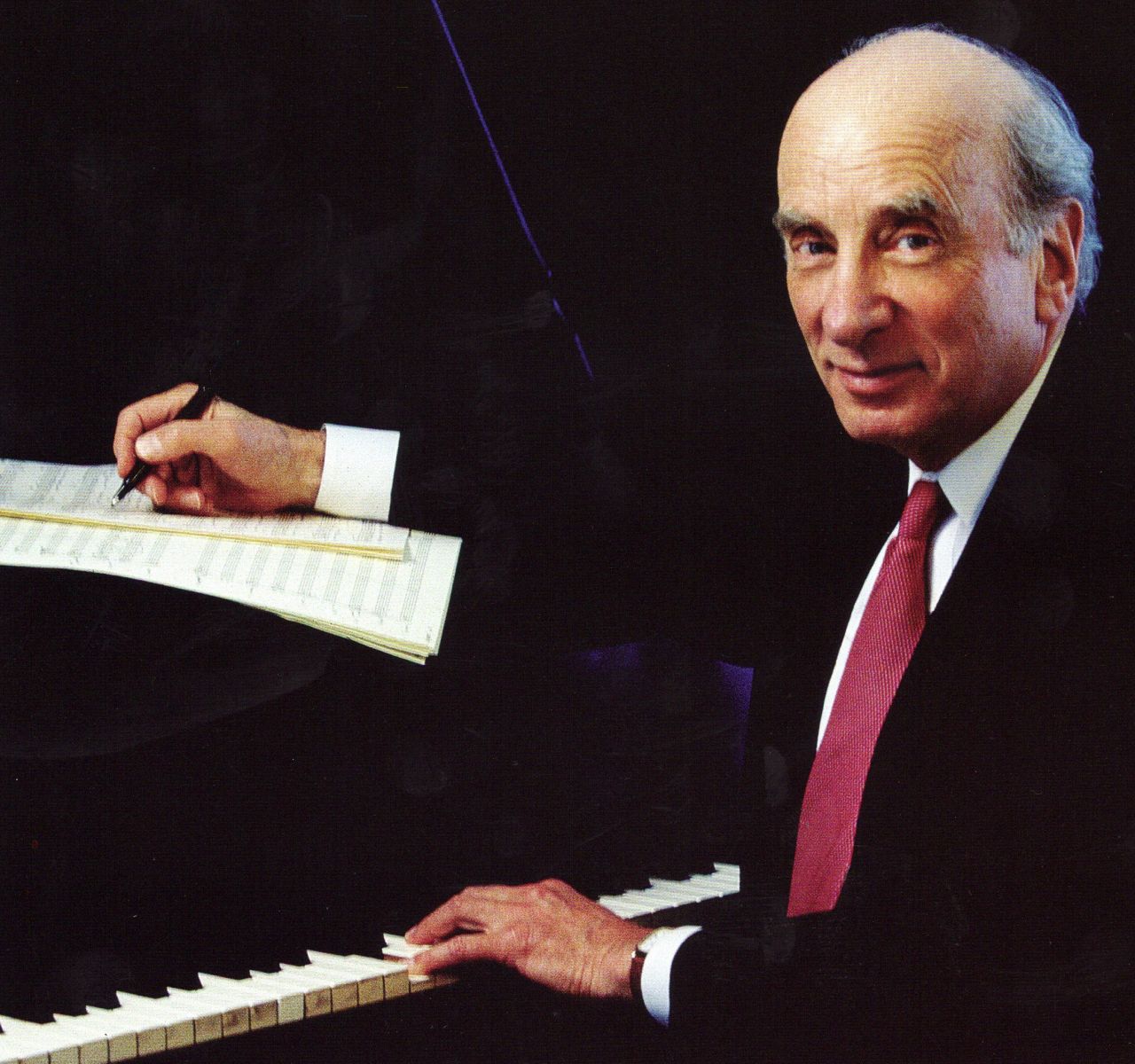
Dick Hyman. Photo courtesy of the artist.
Riverwalk Jazz pays tribute to notable pianists of the Swing Era on a broadcast featuring our good friend and special guest Dick Hyman, a legend of American jazz piano.
Widely regarded as the “Father of Modern Jazz Piano,” Earl Hines grew up in a suburb of Pittsburgh about the same time Louis Armstrong was coming of age on the streets of New Orleans. In the 1920s Hines and Armstrong made a series of landmark recordings in Chicago. By the 1930s Hines was leading his own big band at a flashy, mob-owned nightclub in Chicago, the Grand Terrace. The renowned Swing Era piano man Teddy Wilson, a star of Benny Goodman’s hot small ensembles in the late 30s, recalled the many hours he spent as a young man, looking over Earl Hines’ shoulder at the Grand Terrace, hoping to absorb his style and technique.
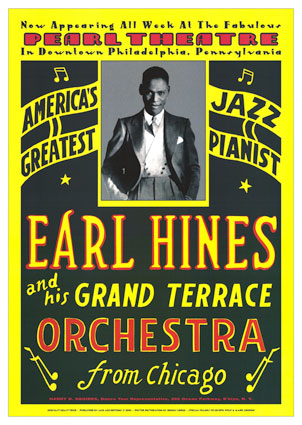
1929 poster image courtesy of The Big Bands Database.
Earl Hines picked up the nickname “Fatha” from a radio announcer adlibbing during a live NBC network broadcast from the Grand Terrace. The story goes that early in the evening Hines had bawled out the announcer for drinking on the job. Later on, feeling miffed at Hines’ self-righteous attitude, the announcer got back at him by introducing Hines on-air as “Fatha.” Somehow the name stuck. Earl Hines had such a profound influence on jazz piano players in the Swing Era, it could be said that “Fatha” Hines was the “daddy of them all!”
In tribute to Earl Hines, our piano duo John Sheridan and Dick Hyman join the full Jim Cullum Jazz Band to play two Hines originals: “Cavernism“ and “Rosetta.” The latter, written in 1933, would become one of Hines’ most enduring signature tunes.
Kansas City, like Chicago, had a hot jazz scene in the 1930s. On a clear night, Count Basie’s live broadcasts from the Reno Club in K.C. could be heard all the way to New York. Jazz pianist Mary Lou Williams landed in Kansas City in 1929 with her husband Andy Kirk’s band, The Clouds of Joy. Soon Williams was in demand for sessions led by big name bandleaders, including Duke Ellington and Benny Goodman. “Clean Pickin’” is a Mary Lou Williams original performed here as a piano feature by special guest Dick Hyman.
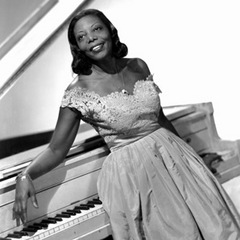
Mary Lou Williams. Michael Ochs Archives, courtesy of prx.
The great Bob Crosby Orchestra featured three important pianists of the Swing Era—Joe Sullivan, Bob Zurke and Jess Stacy. Zurke had a brilliant run with the Crosby Band from 1936-39. In that period, the Bob Crosby Orchestra competed with Benny Goodman for the “Most Popular Band” ranking in magazine polls, often winning a spot just behind the “King of Swing.”
This broadcast features two stunning originals by Bob Zurke: “Hobson Street Blues,“ heard in a two-piano rendition spotlighting John Sheridan and Dick Hyman with The Jim Cullum Jazz Band. Also on the bill, Zurke’s “Lace Embroidery“ performed in a duo piano treatment.
In 1947 Dick Hyman won a contest sponsored by a New York radio station, and scored twelve piano lessons with the great Teddy Wilson. In an interview with host David Holt, Hyman explains the techniques he learned from Wilson in those lessons. He describes Wilson’s signature “runs,” harmonic substitutions, and right hand piano technique, modeled after that of piano giant Art Tatum. Regarding Tatum, Hyman says, “His technique was remarkable and so was his velocity. Tatum could go faster than anything! His sense of harmony had a lot to do with the ideas George Gershwin had arrived at when he wrote Porgy and Bess.”
Dick Hyman’s admiration for Art Tatum was mutual. In a 1949 interview by Art Tatum on Willis Conover’s Voice of America program, Tatum talked about Dick Hyman, the “new kid in town,” as one of his favorite jazz pianists. In tribute to Art Tatum, Hyman performs a solo rendition of Tatum’s much-revered signature arrangement, “Tea for Two.“ Hyman also joins Jim Cullum and the Band for a Teddy Wilson arrangement on George Gershwin’s “Liza.“
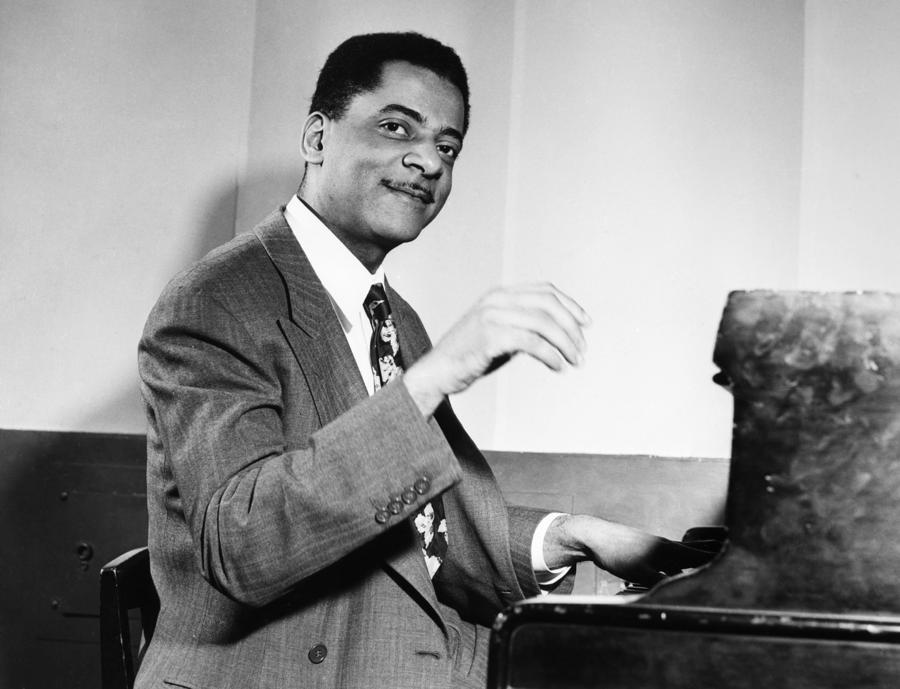
Teddy Wilson, 1950. Photo courtesy of The Granger Collection.
Teddy Wilson was born in Austin, TX in 1912. He went on to become one of the most famous and influential jazz pianists in the Swing Era. Wilson said his style evolved from listening to three great piano players—Fats Waller, Earl Hines and Art Tatum. 1935 was a landmark year in Wilson’s career. One magical night, at a party, Wilson wound up in an impromptu jam session with Benny Goodman. The next day Teddy got a call inviting him to take part in a Goodman small ensemble recording session. This audition gave birth to the groundbreaking, racially integrated Benny Goodman Trio and Quartet. Though integrated groups had recorded well before Goodman’s small ensemble debut with Teddy Wilson on piano, these mixed race sessions were often made under fake names in obscure recording studios. It was still a long-standing taboo in 1930s American culture for white and black artists to perform together at a major public venue. The high jazz bar set by Goodman’s small combos helped shatter that racial stereotype.
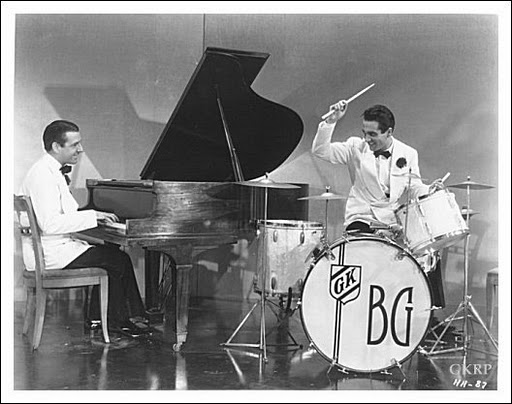
Jess Stacy and Gene Krupa. Photo courtesy of purojazz blog.
The Swing Era ushered in the advent of the jukebox. Suddenly, the sound of Teddy Wilson’s swinging jazz piano poured out of jukeboxes in cafes and bars all across the country. “Moonglow“ by the Goodman Quartet was one of Goodman’s biggest small combo hits. Here, Dick Hyman and John Sheridan perform the number as a piano duet. On “I Would Do Anything for You,” clarinetist Evan Christopher and drummer Ed Torres join our piano duo.
Like Teddy Wilson, pianist Jess Stacy noted his deep influence from Earl Hines. Stacy never came close to Teddy Wilson’s stardom, although they shared piano duties in the Goodman organization at the same time. Wilson had the high-profile role, playing piano out front in Goodman’s combos. Stacy said his role was to make music that would melt into the sound of Goodman’s big Swing orchestra.
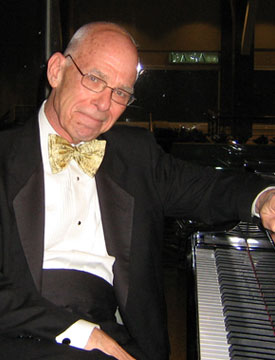
John Sheridan. Photo courtesy of the artist.
Jim Cullum Jazz Band pianist John Sheridan says, “Teddy Wilson was a fluid player, but Jess really struck me because he had such lift, and he was so crisp. He didn’t have quite as much technique as Wilson, but [nonetheless] he would reach out and grab you. While he wasn’t really known as a soloist, he made himself part of the band. He also was a wonderful accompanist to singers and horn players, and made everyone sound great.” Our first Stacy tribute this week is a piano duo and Jazz Band arrangement of Stacy’s original, “Complainin.'“
For two spectacular minutes on stage at Carnegie Hall on the evening of January 16, 1938, Jess Stacy made jazz history with a spellbinding solo still marveled at today. It happened unexpectedly in the middle of Goodman’s showpiece “Sing, Sing, Sing.“ Off the cuff, Benny gestured to Jess to take a solo at the end of a driving hot drum and clarinet duet between Goodman and Krupa. Stacy’s historic impromptu solo is the inspiration for the transcription of his solo heard here arranged for our piano duo, followed by what was, and is, the reverently roaring conclusion of the tune, the concert, and our show.
Photo credit for homepage image: John Sheridan. Photo courtesy of the artist.
Text based on Riverwalk Jazz script by Margaret Moos Pick ©1998

